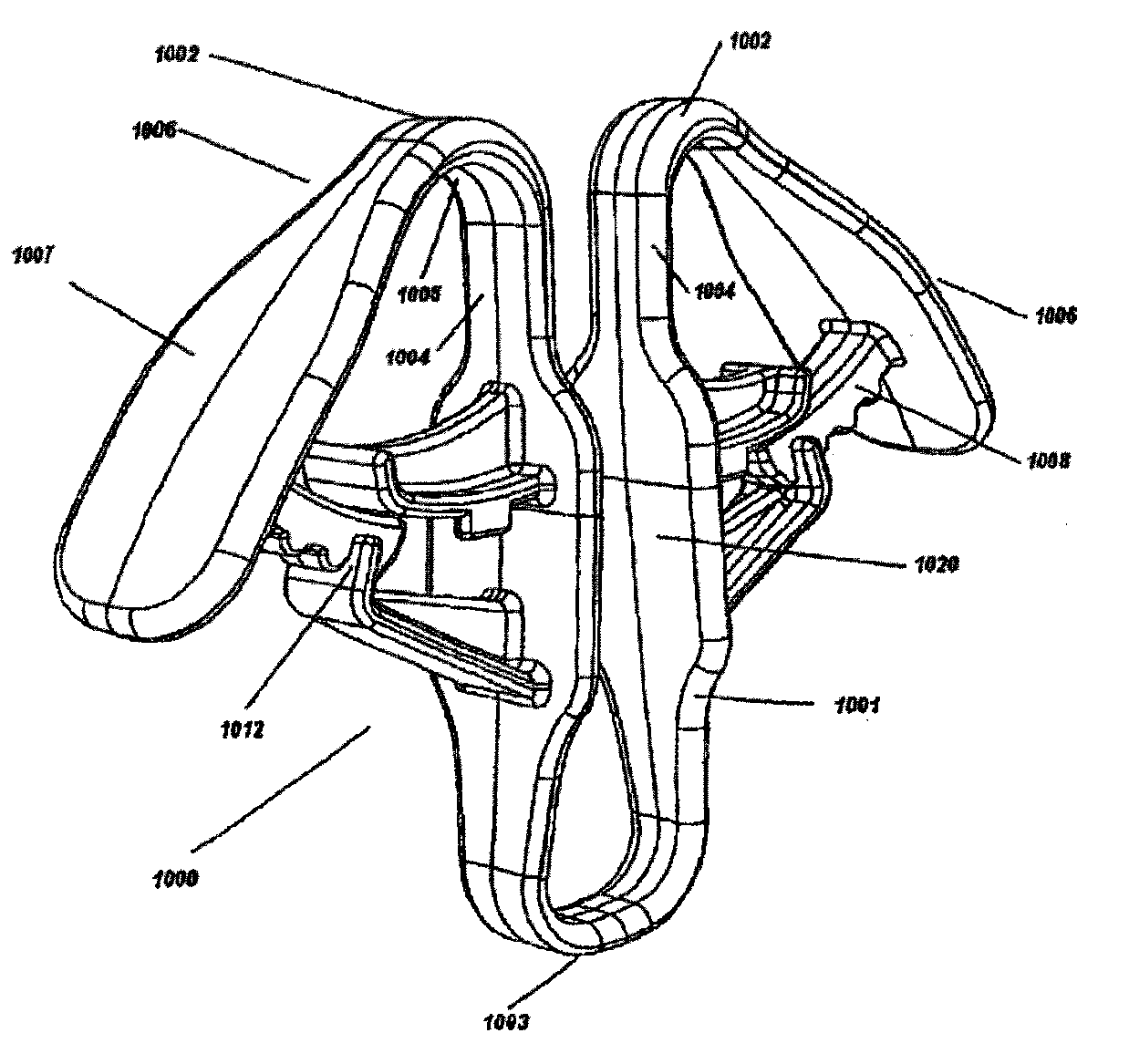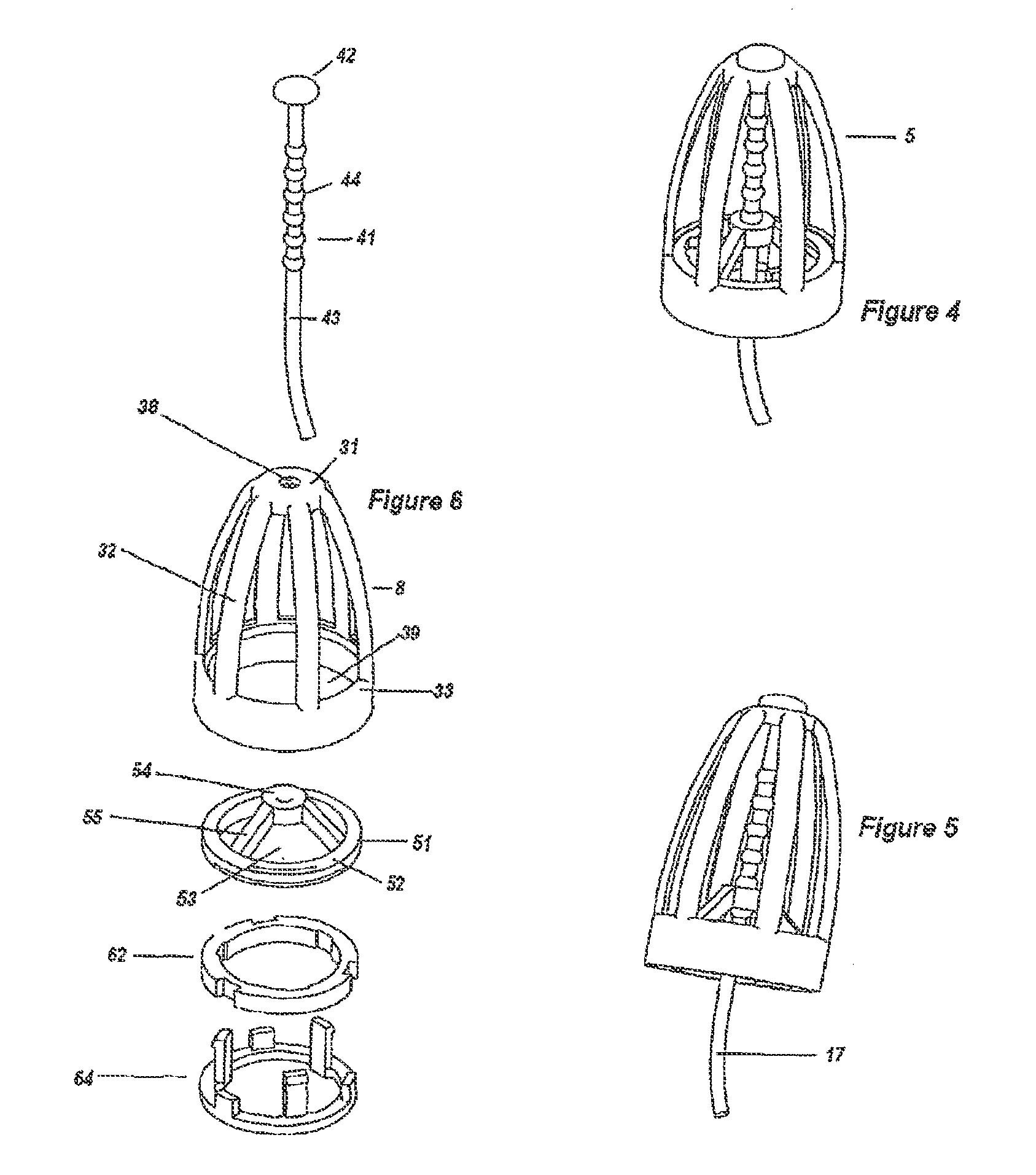Nasal cavity dilator device
a dilator and nasal cavity technology, applied in the field of nasal cavity dilators, can solve the problems of increasing cardiac arrest risks, high cost, chronic addiction problems or withdrawal difficulties, etc., and achieve the effect of improving the passage of air
- Summary
- Abstract
- Description
- Claims
- Application Information
AI Technical Summary
Benefits of technology
Problems solved by technology
Method used
Image
Examples
Embodiment Construction
[0177]Referring to FIGS. 1 to 5 there is shown an improved adjustable nasal dilator device (1) insertable within the nasal cavity of a human being to improve the flow of air through the nasal passage. The device includes a body (2) comprising a top (3) and bottom (4) frame ends interconnected by a series of spaced flexible ribs (5). The top and bottom frame ends are open and substantially circular, and the diameter of the bottom frame end is greater than the corresponding diameter of the top frame end to provide a body shape for convenient insertion within a nasal cavity.
[0178]The device (1) also includes a holding base member (6). As best seen in FIG. 2, the holding base member mounts the bottom frame end (4) of the body (2). The holding base member includes an inner circumferential platform (7) for supporting the bottom frame end (4) of the body (2) in a mounting position. The holding base member also includes an outer concentric circumferential platform (8) for mounting outer she...
PUM
 Login to View More
Login to View More Abstract
Description
Claims
Application Information
 Login to View More
Login to View More - R&D Engineer
- R&D Manager
- IP Professional
- Industry Leading Data Capabilities
- Powerful AI technology
- Patent DNA Extraction
Browse by: Latest US Patents, China's latest patents, Technical Efficacy Thesaurus, Application Domain, Technology Topic, Popular Technical Reports.
© 2024 PatSnap. All rights reserved.Legal|Privacy policy|Modern Slavery Act Transparency Statement|Sitemap|About US| Contact US: help@patsnap.com










